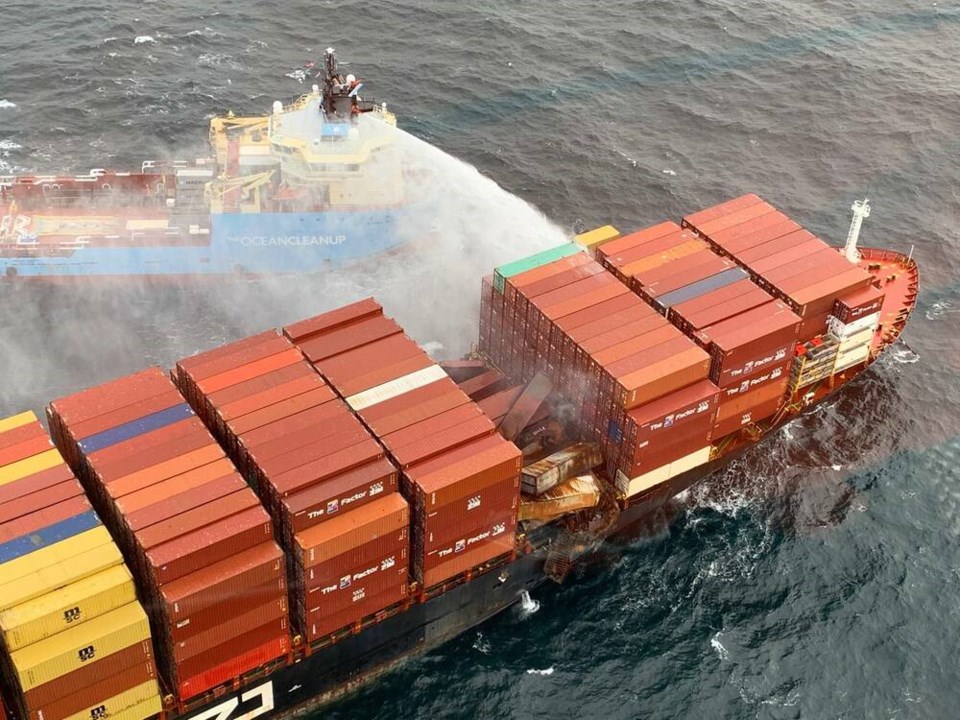Ships are facing harsher weather as storms in the North Pacific grow more severe as a result of climate change, says the head of a marine transportation industry association.
In the wake of an incident where a ship lost 109 containers overboard off the west coast of Vancouver Island, Robert Lewis-Manning, president of the Chamber of Shipping in Canada, said Wednesday that climate change is “100 per cent on our radar.”
The U.S. Coast Guard has said the Zim Kingston listed 35 degrees in heavy weather, resulting in the loss of containers.
It’s uncommon for stacked containers to come off a vessel, said Lewis-Manning, noting container ships are designed for rough weather. “They are actually fastened to each other and fastened to the hull of the ship.”
If they come off, “That’s pretty significant weather that causes that … It has to be pretty violent when it happens,” he said, adding a large vessel listing by 35 degrees indicates a pretty severe storm. “It would feel like a lot. It would feel like the bridge was going into the water.”
The ship made it to Constance Bank off Victoria, where it remains after an on-board fire ripped through a number of containers.
The incident is a reminder that the North Pacific “can be a pretty harsh place,” Lewis-Manning said.
The non-profit Clear Seas: Centre for Responsible Marine Shipping in Canada says an average of 1,382 containers were lost at sea between 2018 and 2019.
There was a spike between November 2020 and April 2021, when close to 3,000 containers were lost in the North Pacific in five separate incidents, it said.
A group of maritime organizations including the World Shipping Council and the International Chamber of Shipping pointed to several causes, including storms, ship design, the method used to lash containers together and deteriorating metal.
It’s also possible that some containers were not loaded correctly or were not adequately secured to cope with rough waters.
The sector is also seeing larger container ships, sometimes stacked to the height of a mid-sized building, Clear Seas said. “Climate change-induced storms, especially in the North Pacific could be another culprit.”
The cause of the Zim Kingston incident is still being investigated, although the owner, Greece-based Danaos Shipping, has said the containers were lost as a result of bad weather.
On Vancouver Island, the Pacheedhat First Nations near Port Renfrew is calling on federal Fisheries Minister Joyce Murray and federal Minister of Natural Resources Jonathan Wilkinson to speed up plans for a multi-purpose marine facility to provide search and rescue and environmental-response services for Juan de Fuca Strait.
Chief Councillor Jeff Jones said the First Nation had committed to working with the federal government to build a marine safety centre, but so far, the project has been “mired in lack of political will to get a real proposal from Canada on the table.”
The First Nation and federal government signed a memorandum of understanding on the marine safety centre more than a year ago, Jones said.
The container spill prompted Jones to raise the topic this week, saying the First Nation is facing more dangerous cargo spills.
Pacheedhat First Nation is extremely vulnerable to potential oil tanker spills and to any impact from the cargo containers that recently fell off the Zim Kingston, he said.


